Recently, I was commissioned by The Guardian to photograph the aftermath of the chemical leak in Charleston, West Virginia. I should say up front that I’m not a spot news or breaking news photographer. I typically work with long from projects and the national media’s short attention span with disasters like this frustrates me, so I intentionally avoided running to West Virginia when the incident occurred. There were far more capable local photographers covering the leak on the ground, because local news, grand or not, is their regular beat. But The Guardian editor who pitched me was interested in the human element of this story and how that could be communicated powerfully through photographs. I was completely unprepared for what I saw. The magnitude of this problem and the people affected by it was simply overwhelming. Clean water is something I always took for granted until then. To get a better understanding of what was happening and how water was (or wasn't) being distributed, I turned to some friends who'd come together quickly after the leak was made public to form the West Virginia Clean Water Hub. Over the next couple of days, Joe Solomon and Nate May allowed me to go along with them to water distribution centers and routes, meeting folks on the ground directly impacted by this catastrophe.
The images I'm sharing here are most of what I submitted to the editor at The Guardian. I'm also including the caption information, as it was submitted, for context. I also pitched taking over their Instagram (@guardiannews - thank you, Katie Rogers) account while there, which they agreed to and provided another platform on which to share this important story. I'm grateful for the opportunity to do this work for The Guardian (thank you, Erin McCann) and for their commitment to a story that most other national outlets touched on only briefly before moving on to Justin Bieber's arrest, the Grammys, and other important news stories (sarcasm intended). I'm also incredibly grateful for the folks (Kim McDonald, Keith Boucher, Candi Elswick, Andie and James Johnson, Benson Cline, Nancy Shepherd, Obi Henderson, and others) who allowed me into their lives and homes to share their stories, for the volunteers working behind the scenes to distribute water and supplies, and to the local media (Ken Ward Jr., Dave Boucher, Dave Mistich, Ashton Marra, and others) in Charleston, West Virginia who continue to doggedly pursue the truth for the people of West Virginia.
(Twelve of the following photographs appeared in The Guardian on 30 January 2014.)
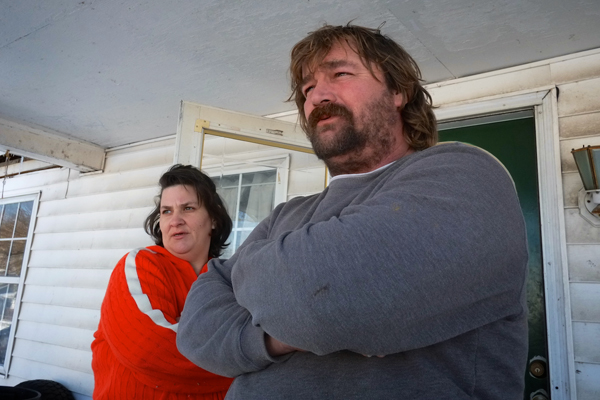
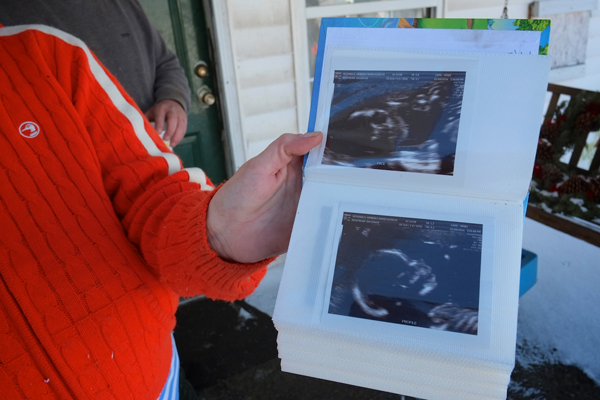
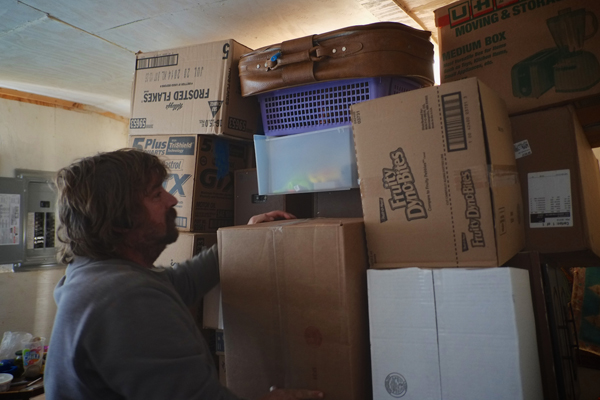
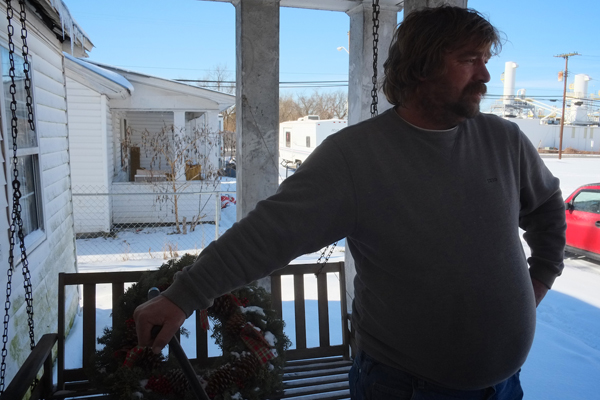
1. Keith Boucher and Kim McDonald of Nitro, West Virginia, have been without clean drinking water for more than two weeks. The couple have a 14 month-old son, Wayne, and Kim is five months pregnant. Volunteers from the West Virginia Clean Water Hub delivered bottled water, diapers, baby wipes, and hand sanitizer to the family on Sunday, 26 January 2014. Freedom Industries, the company responsible for the chemical leak on the Elk River, reloacted chemicals from that site to their Nitro facility, which is just one mile from the Boucher-McDonald household.
2. Kim McDonald of Nitro, West Virginia, is five months pregnant. Here, shows a sonogram of her unborn daughter, Isabella Marie. McDonald is concerned about the potential harm to her daughter in the wake of the Freedom Industries chemical leak. Within days, Freedom Industries began moving chemicals to their secondary storage site in Nitro, just one mile from the McDonald-Boucher residence.
3. Keith Boucher of Nitro, West Virginia, stacks boxes in a back bedroom as he and his girlfriend, Kim McDonald, prepare to move. Frustrated and scared by the recent chemical leak, the two have decided to move outside of the nine-county radius affected.
4. Keith Boucher of Nitro, West Virginia, talks with volunteers from the West Virginia Clean Water Hub, who delivered bottled water, diapers, baby wipes, and hand sanitizer to the family on Sunday, 26 January 2014. Boucher and his girlfriend, Kim McDonald, have relied on social media and word of mouth to get information about the leak, as no local officials have been in touch with them or their neighbors.
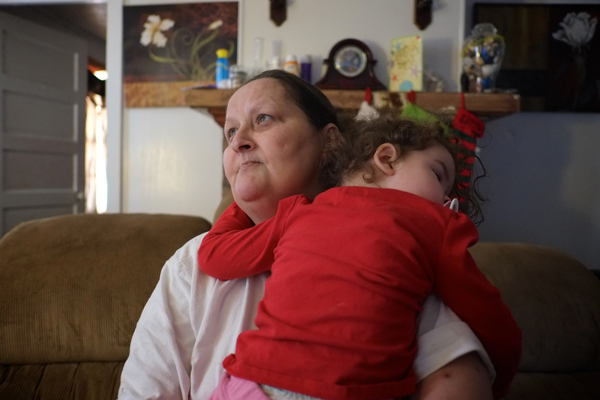
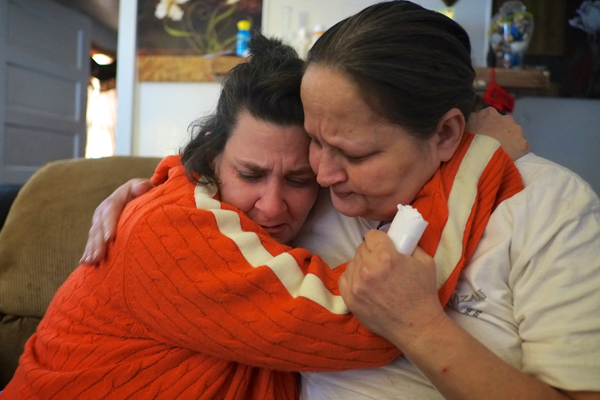
5. Candi Elswick, of Nitro, West Virginia, holds her grandaughter Jaylianna, 2, as she tells volunteers from the West Virginia Clean Water Hub about her struggle to get clean, safe drinking water since the chemical leak was discovered in Charleston on 10 January 2014. “When you’re poor, you can’t afford bottled water,” she told the volunteers. Last week, she took Jaylianna to a relative’s house in Jackson County (about an hour away) to bathe and shower. She hasn’t been able to cook or flush the toilets because of the toxic smell of the water. More than 300,000 West Virginians, like Elswick, have been affected by this leak.
6. Neighbors Kim McDonald and Candi Elswick, console each other after voicing their fears about their children’s health in the aftermath of the Freedom Industries chemical leak. McDonald has a 14-month-old son and is five months pregnant. Elswick is the guardian of her two-year-old granddaughter, Jaylianna. More than 10,000 gallons of a variety of chemicals, mainly coal-cleaning agents, were discarded into the Elk River, which is part of the water source for several West Virginia counties including Kanawha, Boone, Clay, Jackson, Lincoln, Logan, Putnam, Roane, and Cabell.
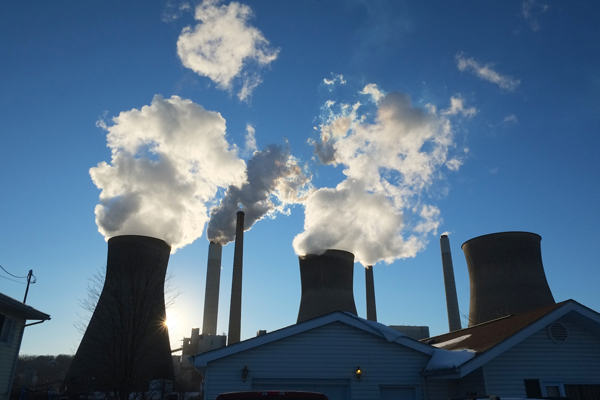
7. The John E. Amos Power Plant towers over homes across the Kanawha River in the town of Poca, West Virginia. This coal-fired plant and countless other chemical manufacturing and storage facilities pepper towns up and down the Kanawha Valley along the river.
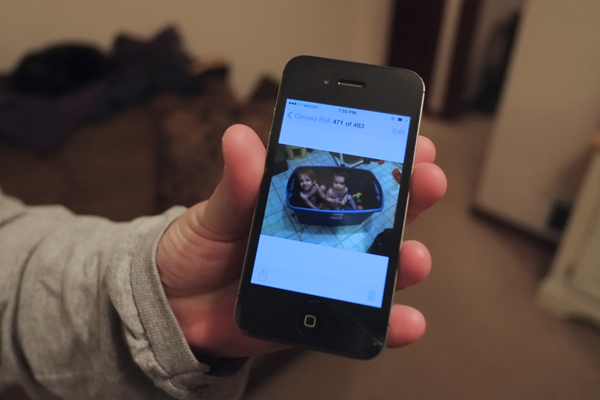
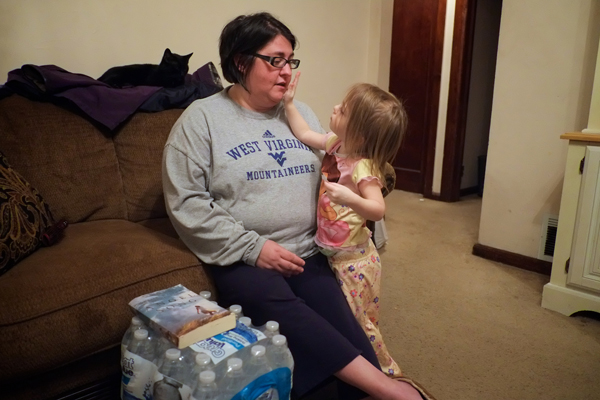
8. Andie Johnson, a third-grade elementary school teacher in Sissonville, West Virginia, explains how she and her husband, James, boiled snow so their youngest children Elie, 3, and Marlie, 2, could bathe in a plastic tub. Older sister, Torie, 15, has been showering with tap water and has noticed some skin irritation as a result. Several of the Johnson’s neighbors are pregnant and are concerned about the long-term impacts of the Freedom Industries chemical leak that has left more than 300,000 West Virginians without clean water.
9. Elie Johnson, 3, comforts her mother, Andie, as she talks about the fear of not knowing the long-term affects of the contaminated water. Johnson, a third-grade elementary school teacher in Sissonville, said she and her husband, James, boiled snow so their youngest children Elie (pictured), 3, and Marlie, 2, could bathe.
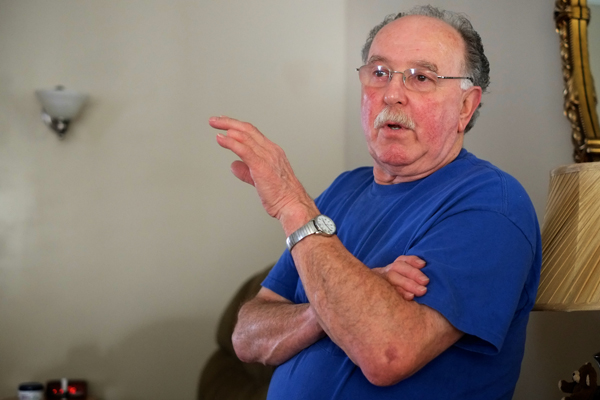
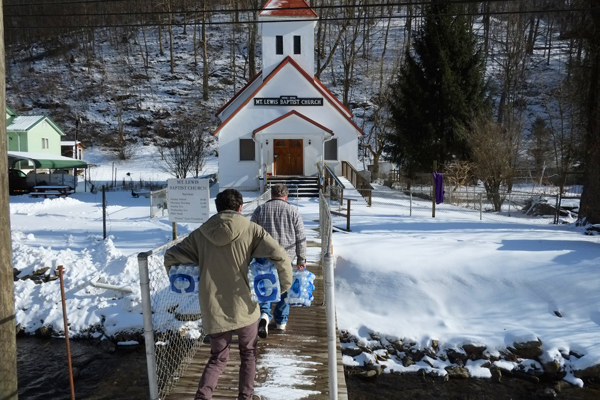
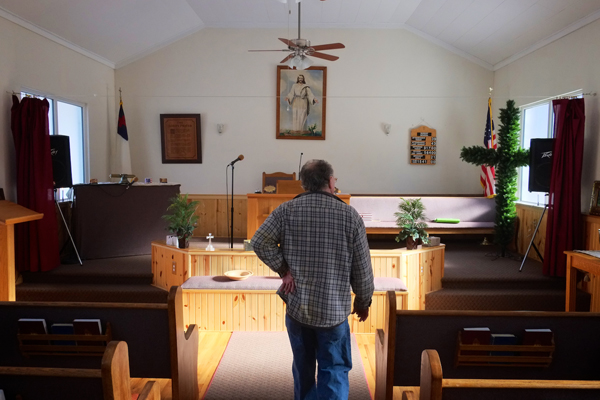
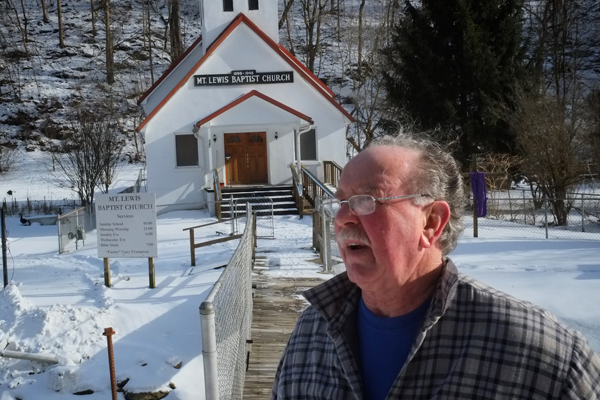
10. Benson Cline, of Mammoth, West Virginia, describes the events of the last two weeks dealing with the Freedom Industries chemical leak. Cline is no stranger to water issues in his community. Roughly ten years ago, a local coal mine contaminated his, and many of his neighbors, well water. He connected to city water, but now doesn’t trust it. After learning of the chemical leak, he reconnected his home to his well, which he says is safer than the alternative.
11. West Virginia Clean Water Hub volunteer, Nate May, and Mammoth, West Virginia resident, Benson Cline, carry donated water to the Mt. Lewis Baptist Church. The church, established in 1896, has served as a water distribution point for the Mammoth community.
12. Benson Cline lingers in the sanctuary of the Mt. Lewis Baptist Church after accepting a water drop off from the West Virginia Clean Water Hub. Established in 1896, the church has served as a water distribution point for the Mammoth community.
13. Mammoth, West Virginia resident, Benson Cline, talks with West Virginia Clean Water Hub volunteers in front of the Mt. Lewis Baptist Church. “ "I don’t trust the water company anymore and I don’t trust the government anymore. I feel like they let everybody down,” Cline said.
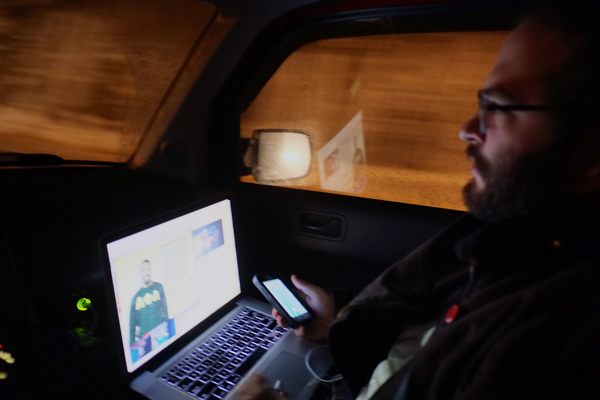
14. Fayetteville, West Virginia resident, Joe Solomon, of the West Virginia Clean Water Hub, works his social media connections on the road and well into the night, reaching out to people who need clean water in the nine-county area impacted by the chemical leak. Solomon believes this to be the largest ever volunteer water distribution project. The hub, created by volunteers on Facebook, has set up numerous water distribution centers often focusing on residents in rural areas without means to get to municipal drop offs.

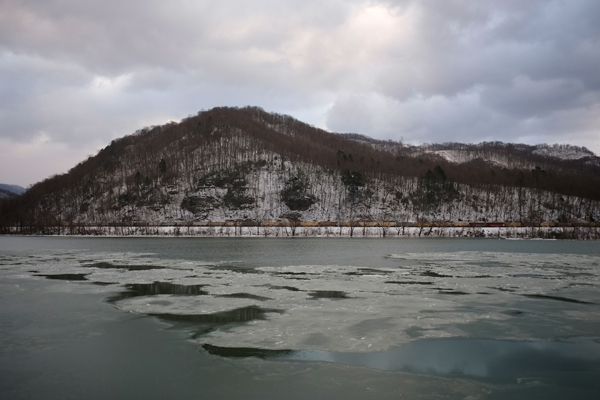
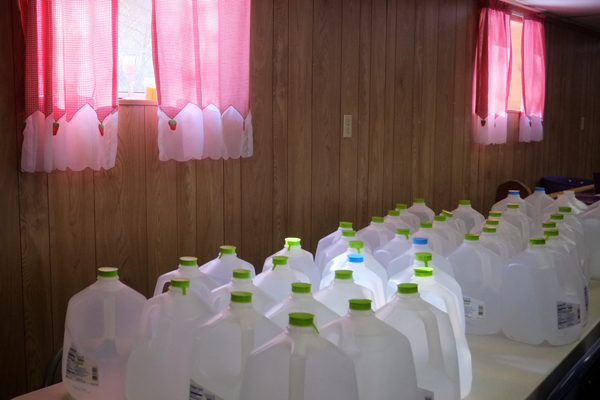
15. An Alpha Natural Resources load-out facility in London, West Virginia. One of the chemicals leaked by Freedom Industries, MCHM, or 4-methylcyclohexane methanol, is used to clean coal before it is loaded on trains for distribution.
16. Coal-laden railcars roll through the upper Kanawha Valley along the icy Kanawha River, just west of the confluence of the New and Gauley Rivers at Glen Ferris, West Virginia.
17. Donated gallon water jugs await distribution in the basement of the Mt. Lewis Baptist Church in Mammoth, West Virginia. The church, established in 1896, has served as a water distribution point for the Mammoth community in the wake of the Freedom Industries chemical leak.
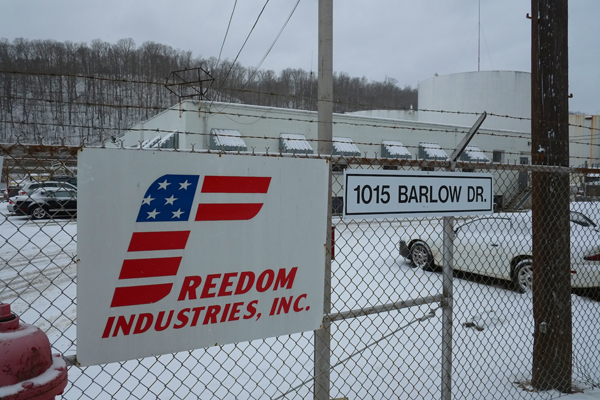
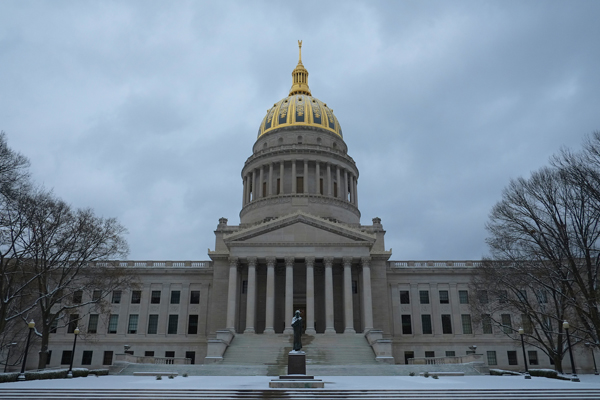
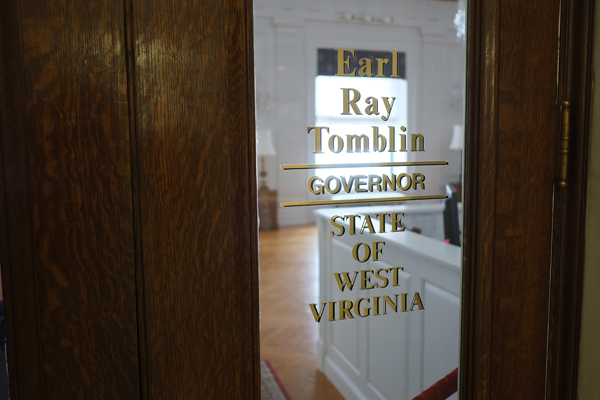
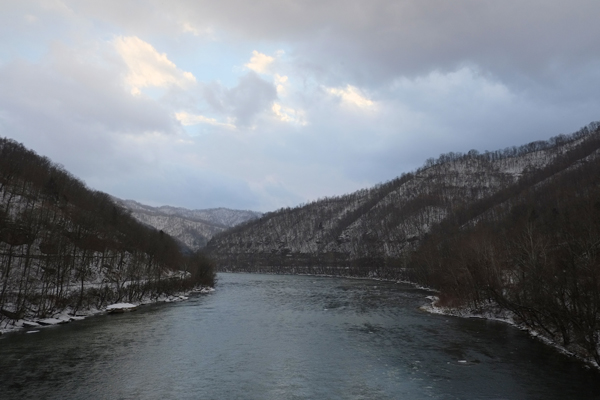
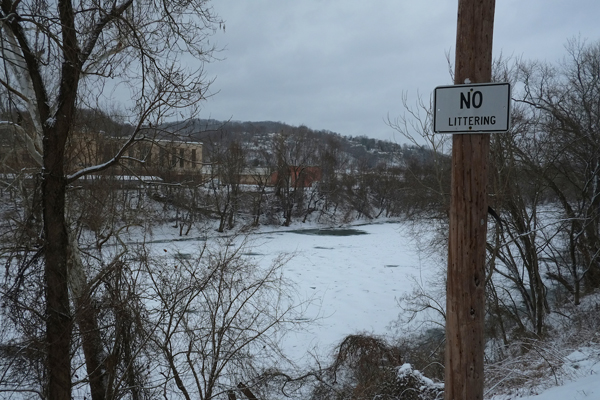
18. Freedom Industries, located on the Elk River in Charleston, West Virginia, the site of a chemical leak authorities believe began on 9 January 2014. More than 10,000 gallons of coal cleaning agents were discharged into the Elk River affecting more than 300,000 customers in a nine-county area. Many are still without safe drinking water.
19. The state capitol in Charleston, West Virginia is located just three miles from Freedom Industries. Many West Virginians are angry with the way state and local governments have handled the fallout of the Freedom Industries leak. Shortly after the leak was detected and the extent of the damage became clearer, Freedom Industries filed for bankruptcy protection. Meanwhile, thousands of West Virginians remain unprotected and without safe drinking water.
20. West Virginia Governor Earl Ray Tomblin’s office at the capitol. Many West Virginians are frustrated with the governor’s handling of the chemical leak, but it came to a head when last week, the governor, when asked if the water was safe to drink, stated that it was a personal decision. “If you do not feel comfortable drinking of cooking with this water, then use bottled water. I’m not going to say absolutely, 100 percent that everything is safe,” said Tomblin. “But what I can say is if you do not feel comfortable, don’t use it.”
21. Dusk on the Kanawha River in the upper Kanawha River. Just miles downstream, the Elk River flows into the Kanawha, which serves as the water supply for more than 300,000 West Virginians. On 9 January 2014, authorities believe a leak began at the Freedom Industries facility in Charleston, resulting in more than 10,000 gallons of coal cleaning agents being discharged into the Elk River.
22. NO LITTERING. Ironically, this sign is located a quarter of a mile from Freedom Industries. The Elk River is in the background.
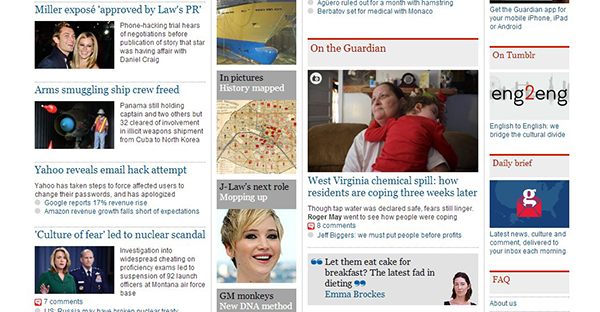
(Screen grab from The Guardian.)